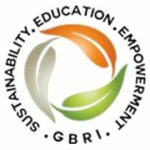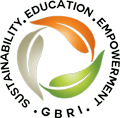The WELL Water Concept delves its pivotal role in promoting optimal hydration, ensuring water purity, and advancing sanitation in building environments. Our course delves into the intricacies of water quality, distribution, and control within architectural structures, addressing both the availability and contaminant thresholds of potable water. Additionally, we spotlight the strategic management of water to prevent damage to building materials and maintain favorable environmental conditions.
Gain a comprehensive understanding of the 8 distinct features of the Water Concept as defined by the WELL Building Standard v2. Through real-world project contexts, we equip you with actionable strategies, and a concise case study will further illuminate the Air and Water concepts of the WELL Building Standard.
Additionally, this course is a part of GBRI’s WELLopedia Series: The ins and outs of the WELL Building Standard v2. Whether you’re seeking stand-alone knowledge or wish to integrate this into the series, the choice is yours—tailored to your interests and credential maintenance needs. Dive in and elevate your understanding of sustainable building standards.
Enhance your professional growth by taking GBRI’s 10 CE hour WELLOPEDIA series, approved by AIA and GBCI for WELL-specific content. On completion, you’ll also earn GBRI’s Wellness Ambassador badge.
Objective
Upon completion of the Water concept module, learners will be able to
- Understand the foundational principles of the WELL Water concept within the WELL Building standard version 2.
- Recognize the critical role of clean drinking water in promoting health and well-being.
- Familiarize with key water quality indicators like turbidity and coliforms and their implications for safety.
- Grasp the factors influencing the chemical composition of drinking water and potential contaminants.
- Learn about various water purification methods and their applications in ensuring water quality.
- Comprehend the risks associated with Legionella bacteria in recirculated water systems and the importance of effective management.
- Appreciate the aesthetic qualities of drinking water, emphasizing taste, odor, and appearance.
- Acknowledge the multifaceted role of water in building design and its implications for sustainability and health.
Keyterms:
WELL Water Concept, optimal hydration, water purity, sanitation, building environments, water quality, distribution, control, potable water, availability, contaminant thresholds, strategic management, damage prevention, environmental conditions, 8 distinct features, WELL Building Standard v2, real-world project contexts, actionable strategies, concise case study, Air and Water concepts, GBRI’s WELLopedia Series, sustainable building standards, professional growth, 10 CE hour, Wellness Ambassador badge, foundational principles, health and well-being, water quality indicators, turbidity, coliforms, chemical composition, potential contaminants, water purification methods, Legionella bacteria, recirculated water systems, aesthetic qualities, taste, odor, appearance, building design, sustainability.










